 Ramesh Nath Pandey
Ramesh Nath Pandey
Minister of Foreign Affairs
Getting some free time out from my schedule, I have just finished reading The Use and Misuse of American Might: The Superpower Myth by Nancy Soderberg, senior foreign policy adviser to President Clinton. It was gifted to me by my son and I don't regret spending time going through the well researched and analysed chapters on some of the major crises during the Clinton administration including the inner dynamics at work inside Washington during that time.
It is a must read for every practioner of diplomacy and those who take a keen interest in the conduct of international relations. The author elaborates the negative (or) the positive impact of the use or misuse of political, economic and military power and influence of the US on the international community. Clinton himself says in the foreword: 'No nation can ignore terrorism or defeat it alone.' The author lucidly describes how the international community failed in Haiti and how the re-instated Aristide 'failed his own country'. She concludes that outside-backed governments seldom succeed in winning the hearts of the people. The book concludes with a plea to 'realigning American foreign policy to work in concert with the international community, rather than clashing with it'.
 John Fry
John Fry
British Council, Kathmandu
Over the holidays I have been re-reading Thomas Kennealy's Confederates, a novel set in the American Civil War of the early 1860s. Kennealy is a master story-teller and can operate over a large canvas. He weaves the subplots into the overall narrative expertly and the result is compulsive reading. I think he is at his best when he is dealing with a historical theme. In Confederates he brings it all alive: the squalour, the desperation, the rank fear of simple farmers whose lives have been swallowed by the awful destruction, the awful waste of war and culpability of those who wage it. I love reading history when it is in the hands of someone who can really project you into the period.  Erika Joergensen
Erika Joergensen
World Food Programme Representative in Nepal
Half a Life by V S Naipaul. It was published in 2001, the same year Mr Naipaul was awarded the Nobel Price in literature. Half a Life tells the story of a father and his son, a man and his wife and of how the Indian caste system plays with peoples lives. It tells the story of Willie Chandran, who springs from an unhappy alliance between a low-caste mother and a father constantly at odds with his life. It's a brilliant story, good humoured and so well told. 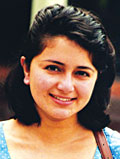 Manjushree Thapa
Manjushree Thapa
Author of Forget Kathmandu and The Tutor of History
I'm reading Tahar Ben Jalloun's This Blinding Absence of Light, which is based on the 20 year incarceration of several military officers who attempted a coup against the Moroccan king. The book is very relevant to Nepal's situation, especially in regards prison conditions and torture. It brings to mind RK Mainali's jail writings-though the man did not, in the Moroccan case, later join the
very forces he had once tried to overthrow.
 Shankar P Sharma
Shankar P Sharma
Vice Chairman, National Planning Commission
Jeffery Sachs' The End of Poverty is a fascinating book. He argues that eradicating extreme poverty at a global level is feasible in this generation. What is needed is the political commitment and some resources to help address the basic needs: hunger, access to basic health services and primary education of the roughly one billion people who live below the extreme poverty line of $ 1 a day.
How to achieve that? Sachs recommends: i. Overseas development aid (ODA) be greatly increased, as countries, trapped in poverty cannot escape on their own efforts alone, ii. market access to the poorer countries be widened for sustained economic growth, iii. developed countries should transfer useful technologies to poorer ones and address their priority R&D needs, iv. because poorer countries cannot repay their debts and at the same time achieve the MDGs, their debts must be cancelled.In Nepal over the past 15 years there has been significant progress, despite limited resources and weak governance. The country has the potential to slash poverty significantly over the next 10 years. The main challenge is consolidating the gains that have been made and finding a resolution to the conflict, whose impact could not only halt progress but even reverse past gains.  Dubby Bhagat
Dubby Bhagat
Author and journalist
Greg Rucka is the Ludlum of the future and proof of this is his thriller, Private Wars. I only read thrillers, and this particular book is from a series called Queen and Country and is set in Uzbekistan and a heroin whose name is Lara Chance. Lara is there to 'exfiltrate' the son of the president who is dying and rescue him from the evil designs of his sister who is a vicious woman with dangerous ambitions. That's how far I've got.
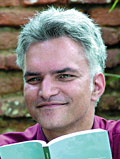 Narayan Wagle
Narayan Wagle
Editor, Kantipur and author of Palpasa Cafe
I've nearly finished reading The Maximum City by Suketu Mehta. It is light-hearted book on serious subjects, and is entertaining and engaging. Mehta takes you on a tour of Bombay following the stylish, the tycoons, politicians, Bollywood personalities and of course the underworld. The writing is simple and based on research and interviews. It is non-fiction yet it reads like a novel. This thick book set me back Rs 1,000 but is worth every rupee. At one point, Mehta satirically plans to meet Bal Thakeray only on the day when he leaves the city and only on the way to airport. Because after the hard-talk interview with the Shiv Sena supremo, Mehta felt he wouldn't be safe in the city. In the book, Thakeray comes across as a comedian.
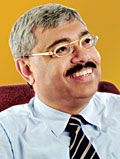 Joydeb Chakravarty
Joydeb Chakravarty
Managing Director
Thompson Nepal Private Limited
One of the many books that I enjoyed reading in 2005 was gifted to me by a client. CK Prahalad's The Fortune at the Bottom of the Pyramid is a compelling argument about an 'inclusive' capitalist model of eradicating poverty through profit, while delivering dignity, empowerment and choice to the billions at the bottom of the pyramid by creating markets and not just products.
Having partnered with clients in both the development and the private sector in this region, I was captivated by Prahalad's forceful contention of a self-sustaining economic model. His book with numerous case studies amply illustrates the viability of this challenge. His viewpoint that by mobilising the investment capacities of large companies, the masses at the BOP will be able to reap economic benefits thereby enhancing the quality of their lives is also supported by many of the development agencies who believe that private-sector partnership will be an integral factor for poverty alleviation. A must read for heads of the development agencies, NGOs and the CEOs in the private-sector.
Our choice
Staffers at Nepali Times and their friends were polled about what they read in 2005 and would like to read in 2006, and we came up with this list.
The End of Oil: On the Edge of a Perilous New World
Paul Roberts
A must-read for every consumer of fossil fuel worldwide who by using petrol, diesel or gas allows the oil industry to wield such enormous economic and political power and pushes the world to an ecological disaster.
The World Is Flat
A Brief History of the Twenty-First Century
Thomas L Friedman
What Friedman means by 'flat' is 'connected': the lowering of trade and political barriers and the exponential technical advances of the digital revolution have made it possible to do business, or almost anything else, instantaneously with billions of other people across the planet.
French Women Don't Get Fat
The Secret of Eating for Pleasure
Mireille Guiliano
If you have a chocolate croissant for breakfast, have a vegetable-based lunch - or take an extra walk and pass on the bread basket at dinner.
Harry Potter and the Half-Blood Prince (Harry Potter #6)
J. K. Rowling
A darker book than any in the series thus far with a level of sophistication belying its genre, this Potter moves the series into murkier waters and marks the arrival of Rowling onto the adult literary scene.
Freakonomics
A Rogue Economist Explores the Hidden Side of Everything
Steven D. Levitt
Forget your image of an economist as a crusty professor worried about fluctuating interest rates: Levitt focuses his attention on more intimate real-world issues, like whether reading to your baby will make her a better student.
The Hungry Tide
Amitav Ghosh
Ghosh's nuanced description of the mood and texture of the Sundarban delta forest serves as a lush backdrop for an intricate narrative that moves fluidly between past and present.
The Kite Runner
Khaled Hosseini
An educational and eye-opening account of Afghanistan's political turmoil with characters whose heartbreaking struggles and emotional triumphs will resonate with readers in Nepal.
The Bookseller of Kabul
Asne Seirstad
After living for three months with the Kabul bookseller Sultan Khan in the spring of 2002, this Norwegian journalist penned this astounding portrait of a nation recovering from war, undergoing political flux and mired in misogyny and poverty.
The Tipping Point
How Little Things Can Make a Big Difference
Malcolm Gladwell
Little changes can have big effects; when small numbers of people start behaving differently, that behavior can ripple outward until a critical mass or 'tipping point' is reached, changing the world.
Why Do Men Have Nipples?
Hundreds of Questions You'd Only Ask a Doctor after Your Third Martini
Mark Leyner
This is much more of a humour book than a health one. The truly curious will find better, more in-depth answers on medical websites but this is funnier.
Collapse
How Societies Choose to Fail or Succeed
Jared Diamond
Collapse examines why ancient societies, including the Anasazi of the American Southwest and the Viking colonies of Greenland, as well as modern ones such as Rwanda, have fallen apart.
The Sisterhood of the Travelling Pants
Ann Brashares
If you've seen the movie, here is the book. Four girls who have been lifelong friends spend the season apart and pass along among themselves a pair of thrift shop jeans which oddly seems to fit each of them even though they have very different physiques.
Edge of Empire: Conquest and Collecting in the Eastern Frontiers of the British Empire 1750-1850
Maya Jasanoff
Jasanoff challenges the idea that the British Empire imposed its own culture on its colonies, arguing instead that the empire thrived because it was able to 'find ways of accommodating difference'.
The Argumentative Indian
Writings on Indian History, Culture and Identity
Amartya Sen
This Nobel laureate's essays have such meticulous reasoning and expresses his point of view so courteously that it is difficult to argue with him.
Books on Nepal
Books in Nepal that you may have missed in 2005 and should get around to in 2006.
Paslpasa Caf?
Narayan Wagle (In Nepali)
245 pages
Publication Nepalaya, 2005
A fictionalised account of some actual events, the lives and deaths of ordinary Nepalis caught in the vice of war. Record-breaking best-seller.
Ropeways in Nepal
Dipak Gyawali, Ajaya Dixit, Madhukar Upadhya (eds)
NWCF and KEVA, 2004
Ropeways in Nepal is that the best way forward for Nepal is to shun long-distance multi-stage ropeways and go for an 'arranged marriage' of micro-hydro projects with the capabilities of the suspension bridge industry.
Forget Kathmandu: An Elegy for Democracy
Manjushree Thapa
Penguin/Viking New Delhi, 2005
A skillful mix of history, reportage, memoir and travelogue, this book revisits three centuries of Nepali history as an elongated journey towards individualism and freedom. This is a personalised account of Nepal's past and present from a local perspective.
A History of Nepal
John Whelpton
Cambridge University Press, 2005
The most recent history book on Nepal is an orderly account of the nation that ranges from the geological formation of the Himalaya many millions of years ago to the political intrigue of 2003 and all in under 300 pages.
Himalayan Perceptions: Environmental change and the well-being of mountain peoples
Jack D Ives
Routledge, London and New York, 2004
One of Nepal's foremost mountain scientists debunks the myth of Himalayan Degradation and says our mountains are susceptible to erosion due to heavy monsoons and geologically fragile topography, not necessarily because of reduced forest cover.
From Goddess to Mortal: The True Life Story of a Former Royal Kumari
Rashmila Shakya as told to Scott Berry
Vajra Publications, 2005
From Goddess to Mortal is the story of a former Kumari, Rashmila Shakya, who was chosen to be the living goddess at the age of four and spent eight years away from her parents at Kumari Ghar living a life vastly different from that of a conventional young girl.
Clear Sky, Red Earth: A Himalayan Story
Text by Sienna Craig, Illustrations by Tenzin Norbu
Mera Publications, 2004
A charming illustrated tale of Namsel, a young girl from Dolpo who exhibits an unusual artistic talent and succeeds in realising her dreams. Entirely suitable for adults but targeted at children aged seven and up.
Brushing up on Mao
Some recent and not-so-recent books about the rise and spread of Maoism in Nepal that could help us better understand what drives this insurgency.
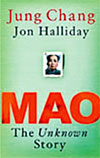 | 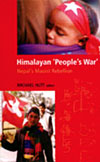 | 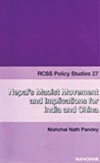 | 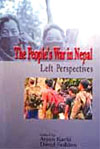 |
| Mao: The Unknown Story Jung Chang and Jon Halliday Jonathan Cape, 2005 | Himalayan 'People's War': Nepal's Maoist Rebellion Michael Hutt, editor C Hurst & Company, 2004 Foundation Books (in South Asia) | Nepal's Maoist Movement and Implications for India and China Nischal Nath Pandey RCSS Policy Studies 27 Manohar New Delhi | The People's War in Nepal: Left Perspectives Arjun Karki and David Seddon (eds) Adroit Publishers, Delhi, 2003 |
 |  | 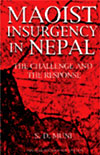 | 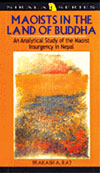 |
| Understanding the Maoist Movement of Nepal Deepak Thapa (ed) Martin Chautari, 2003 | A Kingdom Under Siege: Nepal's Maoist Insurgency 1996 to 2003 Deepak Thapa with Bandita Sijapati the printhouse, 2003 | Maoist Insurgency in Nepal: The Challenge and the Response SD Muni Rupa & Co, 2003 | Maoists in the Land of Buddha: An Analytical Study of the Maoist Insurgency in Nepal Prakash A Raj Nirala Publications, 2004 |
 Domestic Conflict and Crisis of Governability in Nepal Dhruba Kumar (ed) CNAS, 2000 | |||


